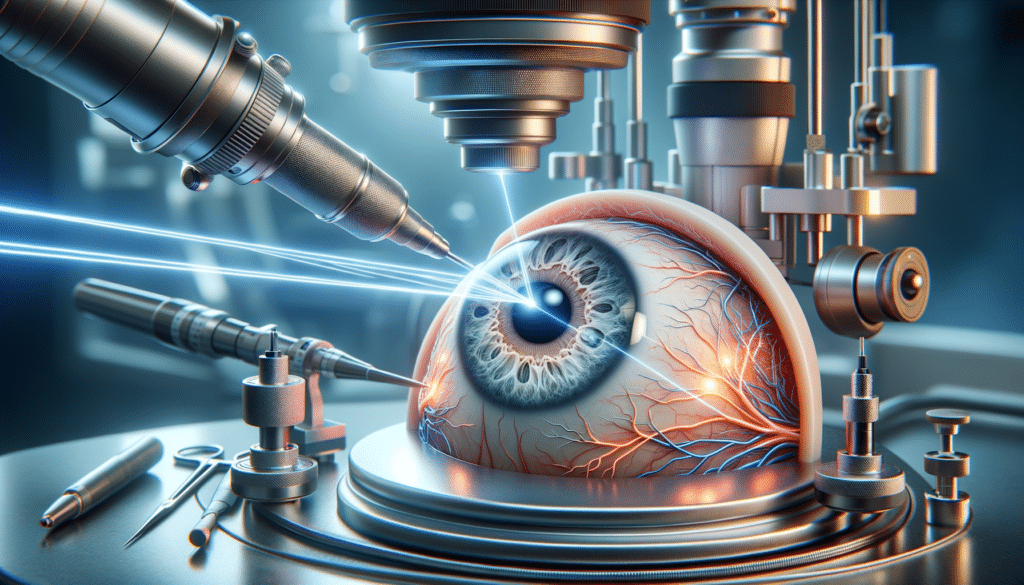The Evolution of Laser Eye Surgery
Laser eye surgery has come a long way since its inception, transforming the landscape of vision correction. The journey began in the 1970s when researchers first explored the potential of lasers in medical procedures. The pivotal moment came in the late 1980s with the development of Photorefractive Keratectomy (PRK), which laid the groundwork for modern laser eye surgeries. PRK was the first procedure to use a laser to reshape the cornea, correcting refractive errors such as myopia, hyperopia, and astigmatism.
The introduction of LASIK (Laser-Assisted in Situ Keratomileusis) in the 1990s marked a significant advancement in laser eye surgery. LASIK quickly gained popularity due to its minimally invasive nature and rapid recovery time. Unlike PRK, which removes the corneal surface layer, LASIK involves creating a thin flap in the cornea, allowing for precise reshaping of the underlying tissue. This innovation reduced discomfort and accelerated healing, making it one of the top options for vision correction.
Technological advancements have continued to refine laser eye surgery techniques. Custom LASIK and wavefront-guided LASIK are among the renowned innovations that offer highly personalized treatments, improving outcomes by addressing unique corneal irregularities. The evolution of laser eye surgery exemplifies the medical field’s commitment to enhancing patient experiences and outcomes.
Benefits and Considerations of Laser Eye Surgery
Laser eye surgery offers a range of benefits that have made it a popular choice for individuals seeking improved vision. One of the most significant advantages is the potential for long-term vision correction, reducing or eliminating the need for glasses or contact lenses. This freedom can enhance the quality of life for many, allowing for greater participation in activities without the hindrance of eyewear.
Another key benefit is the quick recovery time associated with procedures like LASIK. Most patients experience improved vision within 24 hours, with minimal discomfort. This rapid recovery, combined with the precision of laser technology, makes laser eye surgery a highly regarded option for vision correction.
However, potential candidates should consider several factors before undergoing laser eye surgery. Not everyone is an ideal candidate; factors such as corneal thickness, age, and pre-existing eye conditions can influence eligibility. It is crucial to undergo a comprehensive eye examination and consult with a qualified ophthalmologist to determine the most suitable procedure.
Moreover, while laser eye surgery boasts a high success rate, it is essential to acknowledge the potential risks and side effects. These can include dry eyes, glare, halos, and, in rare cases, vision regression. Understanding these aspects and having realistic expectations are vital for a satisfactory outcome.
The Future of Vision Correction: Emerging Technologies
The future of vision correction is bright, with emerging technologies poised to revolutionize laser eye surgery further. One promising development is the advent of SMILE (Small Incision Lenticule Extraction), a minimally invasive procedure that offers an alternative to LASIK. SMILE involves removing a small piece of corneal tissue through a tiny incision, preserving more of the corneal structure and potentially reducing the risk of dry eyes.
Additionally, advancements in femtosecond laser technology are enhancing the precision and safety of laser eye surgeries. These lasers can create corneal flaps with exceptional accuracy, minimizing complications and improving outcomes. As research continues, the integration of artificial intelligence and machine learning in laser eye surgery is expected to optimize treatment plans, offering even more tailored solutions for patients.
Another exciting frontier is the exploration of gene therapy and regenerative medicine in vision correction. Scientists are investigating ways to repair and regenerate damaged corneal tissue, potentially offering solutions for individuals who are not candidates for traditional laser procedures. While these technologies are still in the experimental stages, they hold promise for expanding the scope of vision correction and improving patient outcomes.
The continued evolution of laser eye surgery underscores the commitment to enhancing vision correction techniques, making them safer, more effective, and accessible to a broader range of individuals. As technology advances, the dream of achieving perfect vision without the aid of glasses or contact lenses becomes increasingly attainable.




